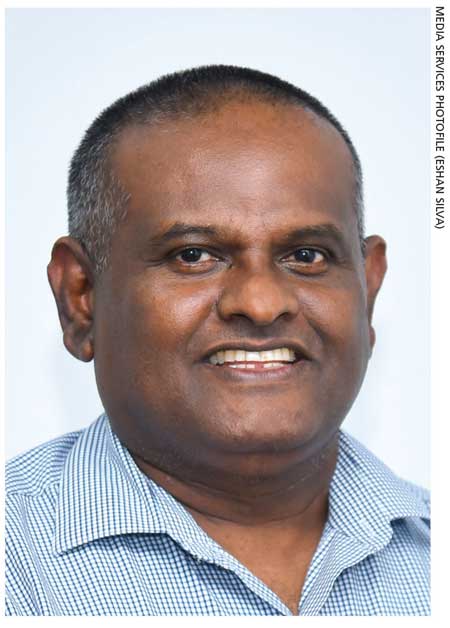ADVERTISING INDUSTRY
Compiled by Yamini Sequeira
STAYING AHEAD OF THE CURVE
Adrian Selvadurai notes the challenges faced by the advertising industry
Q: What are some of the unprecedented challenges in the media landscape today, due to the COVID-19 pandemic and ongoing economic crisis?
A: The sequence of unfortunate events since the 2019 Easter Sunday attacks has changed people’s lifestyles and behaviour; and in turn, had an impact on established media consumption patterns.
The advertising industry faced a multitude of challenges due to shifts in media consumption – some of which have proven to be good for the ad industry; others not so much.
There was an estimated 10-15 percent reduction in media investments last year due to the unfavourable external climate although advertising volumes increased by 14 percent in the same period. Radio and digital platforms also grew during the extended COVID-19-related lockdowns.
Several small and medium-size clients have moved out of the advertising space as they were unable to cope with the rising cost of operations while some larger advertisers have capitalised on the situation and increased their market share.
There is a perceptible shift in advertising spend from traditional to digital media; but it will not be a total changeover since businesses and ad agencies need to examine the ecosystem of each marketing communications medium to assess whether their messages are reaching the intended audiences.
The current reach of media is as follows: TV (75%), radio (37%), print (21%), digital (48%) and cinema (2%).
Q: In the current stressed environment, do the same media buying rules apply – or are you trying to innovate?
A: Since previous planning approaches and media mixes may not be applicable any longer, we have become more dynamic in our media planning strategies.
Given the upheavals in the wider economy and across various industries and sectors, agencies understandably have to be on their toes to understand the impact of the changes on their clients’ businesses.
Digital penetration has increased from 24 percent in 2017 to 48 percent last year. Meanwhile, the usual five percent allocated for digital advertising has increased to between 18 and 20 percent over the past two years. There is a trend to spend on television advertising and TV channels’ social media networks.
Q: How do businesses balance the media consumption habits of the baby boomers compared to those of millennials?
A: The manner in which the younger generation consumes music, sports and news is changing due to advanced technological tools.
As media buyers, we need to understand their consumption patterns and lifestyles to recommend the most effective spend for our clients. The media mix changes according to the target audience.
Q: What is the quality of advertising – in terms of both creativity and production values – in Sri Lanka?
A: The government imposes taxes on foreign commercials to protect local production businesses; and combined with new technologies, we’re seeing better production values.
In my view however, our creativity needs to improve much more to be on a par with the region.
Q: What would be your quick fixes for the hardships that beset our economy at present?
A: The recently secured Extended Fund Facility (EFF) from the IMF will hopefully ease inflation, and reduce operational and production costs amid shrinking advertising budgets as clients focus more on their businesses.
The advertising industry needs clients to loosen their purse strings when it comes to their marketing communications spend so that there’s greater room for creativity.
Q: Sustainability of resources is becoming a key priority for countries and commercial entities alike. In your view, what can be done to stem the brain drain in the ad industry?
A: The advertising industry is witnessing a brain drain among its younger talent and retaining them has become a challenge.
We need to give them hope; they need to know that the country has a vision for prosperity so there can be a bright future.
Advertising agencies can involve younger talent in overseas campaigns through their international networks to offer them greater exposure and incentives to stay in Sri Lanka. As an industry, we will also have to adjust to their lifestyle preferences such as working from home.
Q: And last but not least, how do you see 2023 for the advertising fraternity in general?
A: We are glad that 2023 will be a year of recovery even though economic activity remains subdued – however, we expect the situation to improve as disposable incomes grow.
Looking ahead, we envision changes in media habits with the digital platforms gaining popularity.
Some recent trends are the increase in subscriptions for pay TV platforms for better viewing experiences and wider channel options; more television content on digital platforms as channels create their own OTT spaces; radio channels increasing their ‘on ground’ opportunities with the ease of restrictions to interact with their listeners; and cinema audiences set to increase with the release of the latest (and other) movies that were on hold.
The situation remains fluid in the advertising industry but we ‘re ready to face the challenges and grow as we move ahead.




